Back in 2003 I worked with a college friend to build a big set of speakers, and in 2015 I did some updates to make them somewhat less terrible- I wrote about that here: https://totallyshould.com/?p=870
One big problem with these speakers was that they were really not capable of producing much bass, and it took so much EQ to balance things out that they really couldn’t play very loudly. They sounded kind of boomy and hollow, probably due in combination to the walls flexing, the ported box tuning, and the sparse batting that was intended to (but did a poor job of) absorbing internal resonances. I wanted to see if I could really make them deliver on the promise of a loud barn speaker with some hifi sensibility.
There’s a project out there that I’ve heard of but didn’t pay much attention to, the Econowave . I didn’t copy it, but I took it as inspiration and found some drivers and a horn. I used the GRS 15PT-8 as a 15” woofer, the PRV D280-ti and the Dayton H6512 waveguide. At the time of this writing this was about the cheapest combination of parts that I could find that would give significantly higher efficiency and bass output in the existing 4.25 cubic foot box.
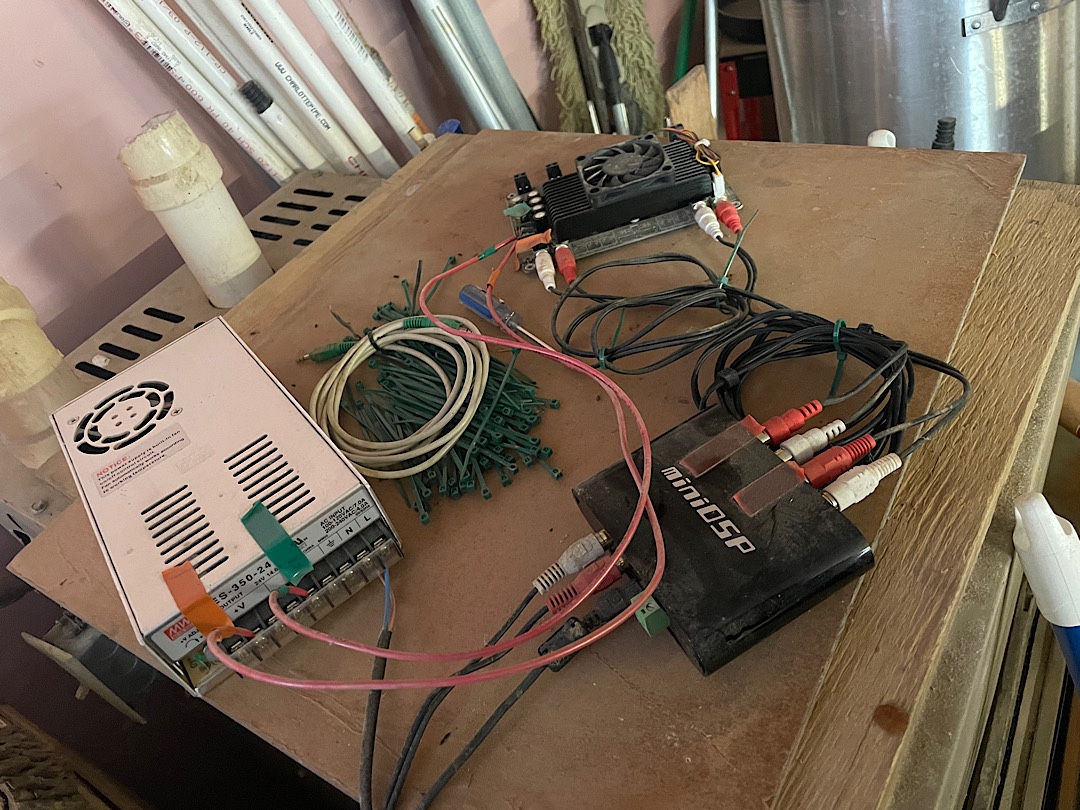
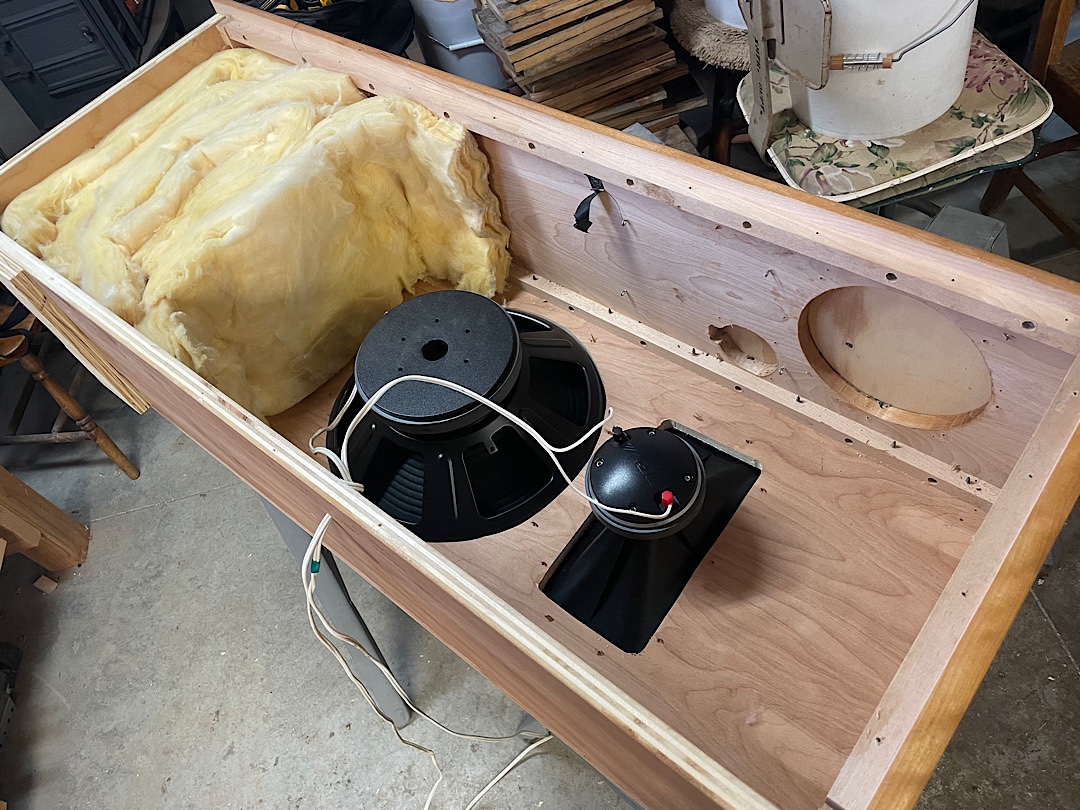
I decided to skip the port with these. I no longer have access to the Mathcad worksheet for simulating mass loaded transmission lines, and I didn’t think it was worthwhile to do learn how to do it in Hornresp – it really would have taken something like that instead of WinISD to do it predictably because of how tall the box is. Instead, I checked the numbers for excursion limited bass SPL and decided that a Linkwitz Transform was the best way to go. According to WinISD I would be able to extend the bass another half octave lower without running out or power or excursion as long as I also added a steep highpass. I took -3db point from about 60hz down to 35hz, and then added a 24 db/octave highpass at 30hz.
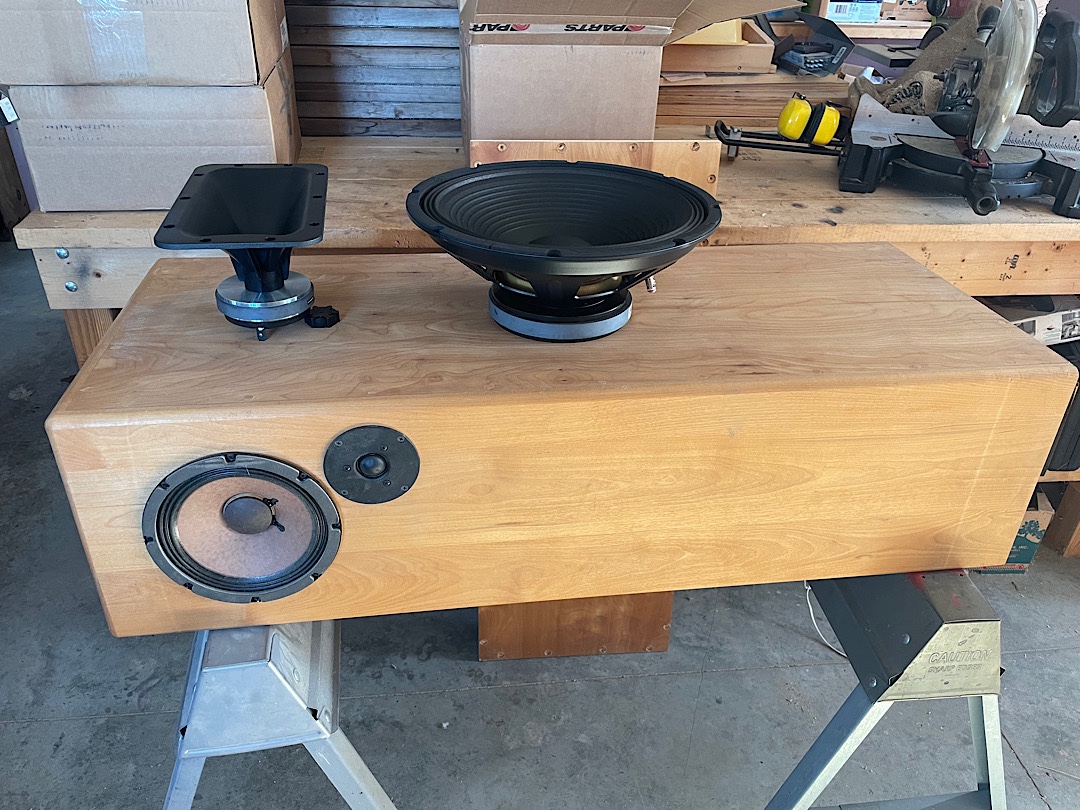
I used a new (to me) measurement technique to dial these in. I used something called the “MMM moving mic method” to perform something resembling an anechoic on-axis measurement of the speaker. The way this is executed is by playing periodic pink noise while taking an average reading on a real time analyzer while randomly moving the mic around the zone of interest. In this case I swung the mic up and down several inches in front of the tweeter and woofer, taking care to keep it moving and not linger in one area too long to too often. In other speakers I’ve checked it’s pretty repeatable. Shout out to Joentell for pointing me toward this method and working with me to get it going.
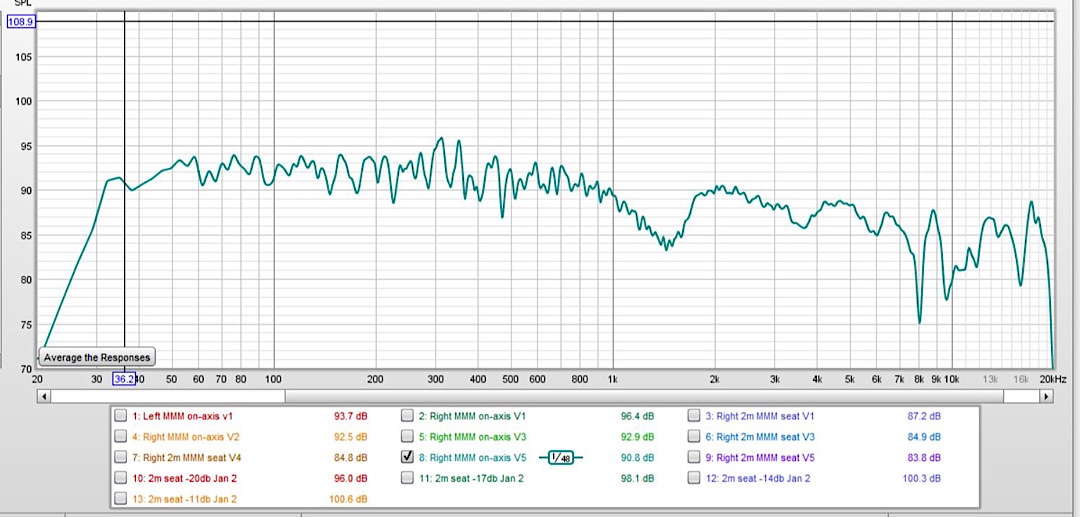
Ultimately the on-axis response that I’ve created should be a flat horizontal line. it’s not, and there are a number of problems with it. Rather than tear it apart and talk about what’s separating it from a $10k reference monitor like the JBL M2, I’d like to focus more on what it’s able to get done for this all-in price of around $250 per speaker (not counting discman, labor, or wood).
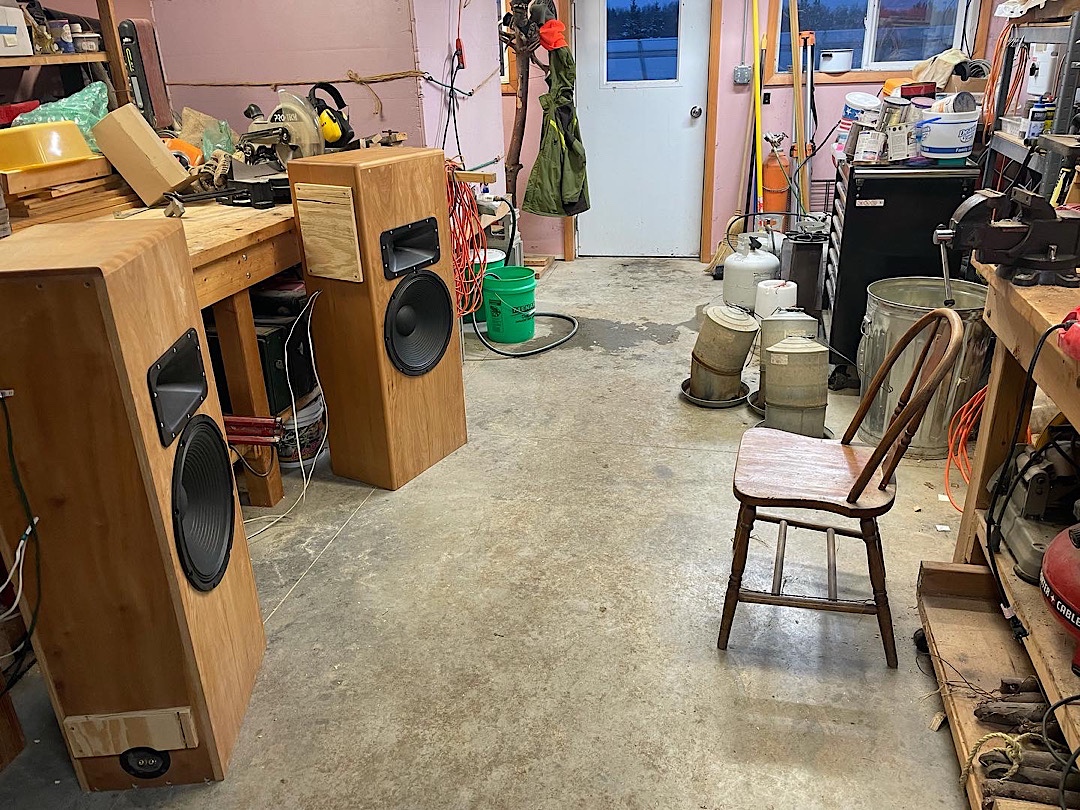
One thing that I noticed with these speakers is that the tweeters and woofer are fairly directional. This is to be expected, and I’m sorry I didn’t have time to measure that, but it means that as you move away from the speaker the highs don’t fall off as quickly as a lot of the home speakers I have experience with. For this reason I kept the absolute level of the tweeter just a bit lower than the measurements might suggest. In the future I’ll do a re-tune when they are in their final home, but for now they’re still just a bit bright since I anticipate they’ll get used from a greater distance than the chair.
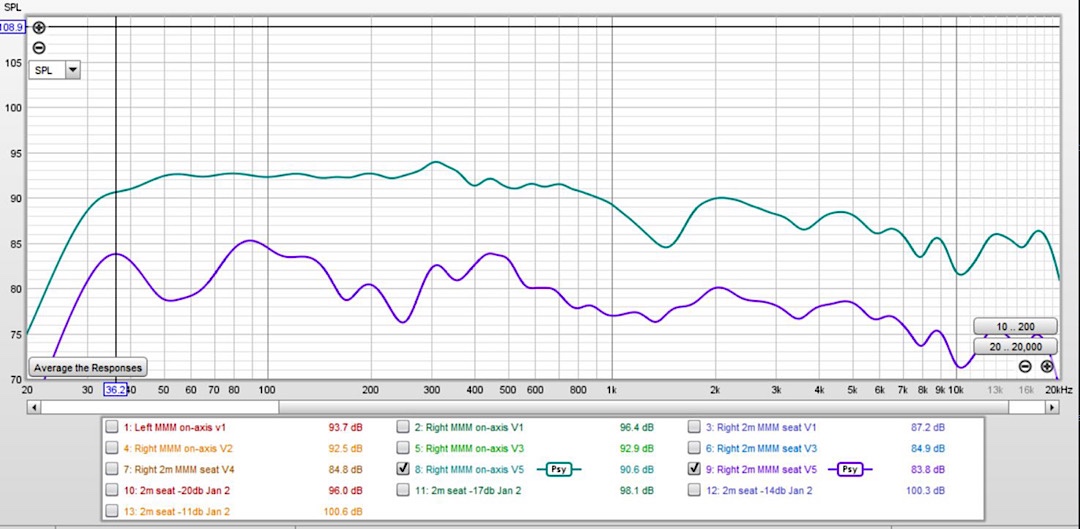
Finally I did some distortion tests to make sure that the bass boost wasn’t too aggressive and the tweeter wasn’t stressed from the low crossover. The above graph may not be what people are quite accustomed to seeing.
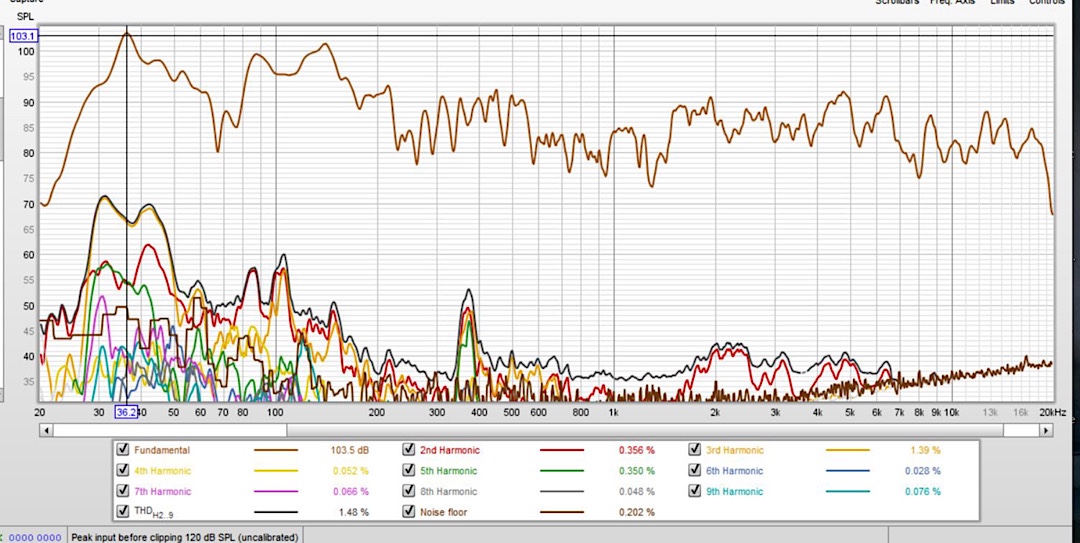
Here’s another way of presenting the same data. It shows that above 100hz distortion mostly stays below 1% at 85db at two meters. Compared to home audio equipment that’s respectable!
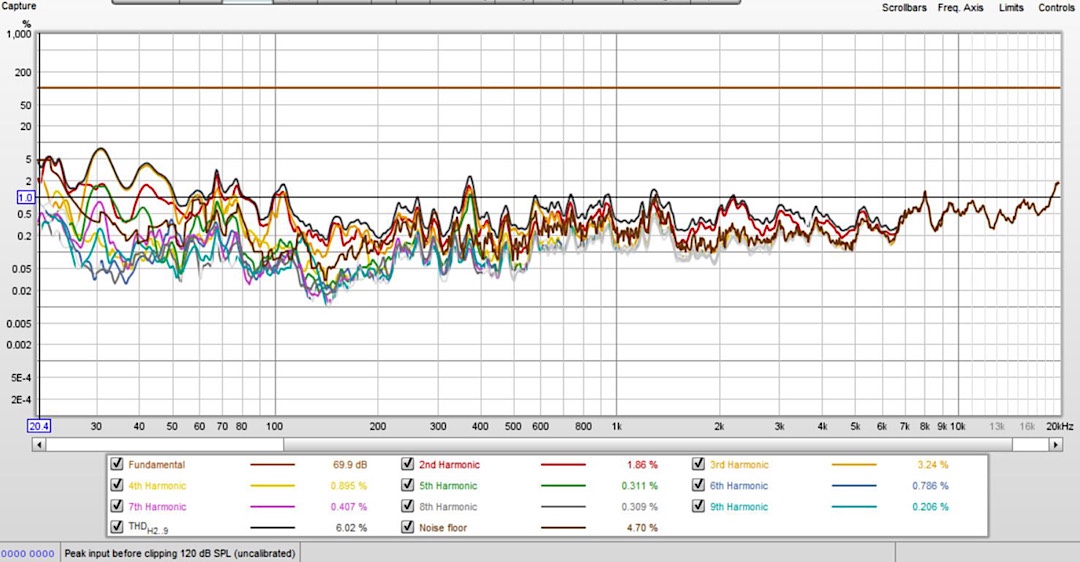
That just about wraps it up. These things have some new life and in their latest form make Pink Floyd and Emerson Lake and Palmer a lot of fun. Thanks for reading!
